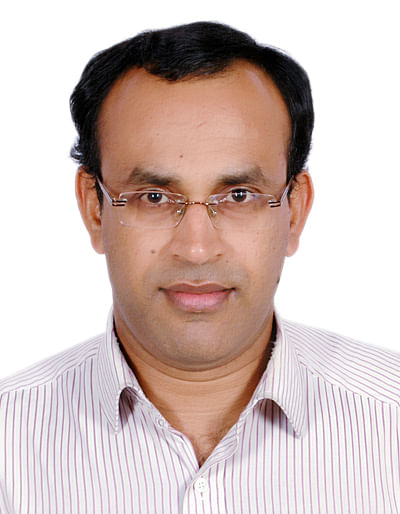Race for power tariff cut will derail reforms in the sector
Delhi chief minister Arvind Kejriwal’s decision to cut power tariffs by half (through a subsidy) triggered Maharashtra and Haryana to announce the reduction in electricity rates. As Lok Sabha polls are approaching similar demand of slashing power tariff has started coming in from several other states.
Reduction of power tariff may bring cheers among consumers immediately, but experts cautioned that populist measure would harm the power sector’s interest. Interestingly none of the states, which have announced cut in power rates, have spelt out steps to provide quality electricity to consumers and measures to reduce loss of power due to theft or leaks in transmission.
The Delhi government announced reduction in tariff at a time when many states have started increasing rates aiming to make discoms financially healthy. In last financial year, 25 states raised tariffs while in the current fiscal nine states have already raised power tariffs.
However AAP’s triumph in Delhi polls and subsequent announcement of power subsidy by the government, will certainly force other states to rethink on their plan to increase the rates fearing criticism from public. This will ultimately lead to putting the much needed reforms in jeopardy.
Populist schemes adopted by various state governments like free or subsidised power to agriculture, low tariffs, failure to plug leakages have hit the distribution companies badly. With the state governments having a poor track record in clearing their subsidy bills to electricity utilities, combined losses of the country’s distribution firms peaked at Rs 2,40,000 crore in March 2012.
Though the Delhi government claimed that it has money to subsidise power and subsidy out go will be just Rs 60 crore for three months, experts are not ready to accept this argument and say it is under estimated. Many states, where chorus for low tariffs is increasing, are not in a position to offer similar sops to their consumers due to their poor financial health. As the debt ridden distribution companies (discoms) are struggling to provide quality power, experts warn other states against announcing any more subsidies.
In 2012, the Centre announced the bailout package with the condition that the discoms have to revise tariffs to ensure they should not go bankrupt and take steps to plug leakages. So far eight major defaulting states have started restructuring the liabilities of their discoms with the promise to revise rates. Those states which have agreed to effect revision of tariffs will also get bank loans to revive their sick discoms as revival packages.
However, after the latest developments in power sector like reduction in tariff have made the banks worry whether the discoms will go back on their promise or go head with the reforms. If the discoms break their promise, then banks may not lend them any more which will ultimately lead to collapse of the debt restructuring scheme. If the discoms don’t have money, then how they will pay for power purchased from producers, questions a senior official in the ministry of power.
Against reforms
Overall, banks had a combined exposure of about Rs 4.7 trillion to the power sector at the end of December, which also included loans given to private power companies, said the official. “The whole idea of the Centre announcing debt restructuring package was to make the discoms financially viable. If the state governments don’t pay their subsidy amount, ultimately consumers will suffer as they will not get uninterrupted power”, Razdan says.
The Planning Commission always pulled up the states against giving huge power subsidy. Instead it had been asking the states to pump in money to priority areas like education health and sanitation. The commission always suggested that instead of power subsidy, the governments should focus on giving quality power by taking reforms in reducing the T&D losses and tapping non conventional energy and saving energy.
In Delhi, the average cost of supply of power stands at Rs 7.39 per unit. As per the National Tariff Policy’s 20 per cent prescription, discoms should be allowed collect a minimum average tariff of Rs 5.92 per unit, but following Kejriwal’s announcement power will be supplied at Rs 1.9 per unit. Then who will bear the burden of loss of Rs 5.49 per unit, ask experts.
“The policy of free power is against the spirit of reforms. First priority should be to improve the financial health of utilities and provide quality power, ” B K Chaturvedi, member (energy and infrastructure), Planning Commission, says. “Consumers should pay for what they can afford. The sector is not in a position to take by further burden,” he says.
Delhi’s power purchase cost has gone up since 2009 with the distribution utilities incurring losses in power trading. It is estimated that the utilities suffered a loss of Rs 900 crore in 2011-12 due to inaccuracies in demand forecasting and a fall in the rate of sale of power in the short-term market nationally. In Maharashtra, the latest decision of 20 per cent tariffs cut (except Mumbai) will lead to Rs 700 crore burden on the exchequer per year. Haryana has gone a step further by announcing not only tariff roll-back, but also promising not to increase power tariffs in fiscal 2015.
Power sector, which is always a victim of populist programme, is again set to become prey to politics with the Lok Sabha polls around the corner. As the chorus intensifies for reducing the power rates from other states, question is being raised is whether even the tentative reforms introduced in the sector will derail.
Deccan Herald is on WhatsApp Channels| Join now for Breaking News & Editor's Picks
